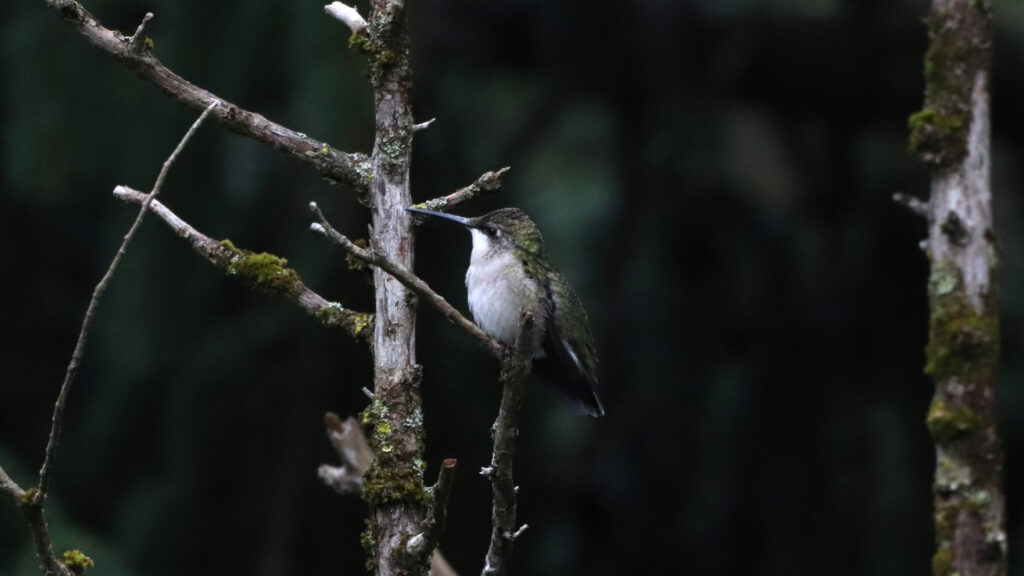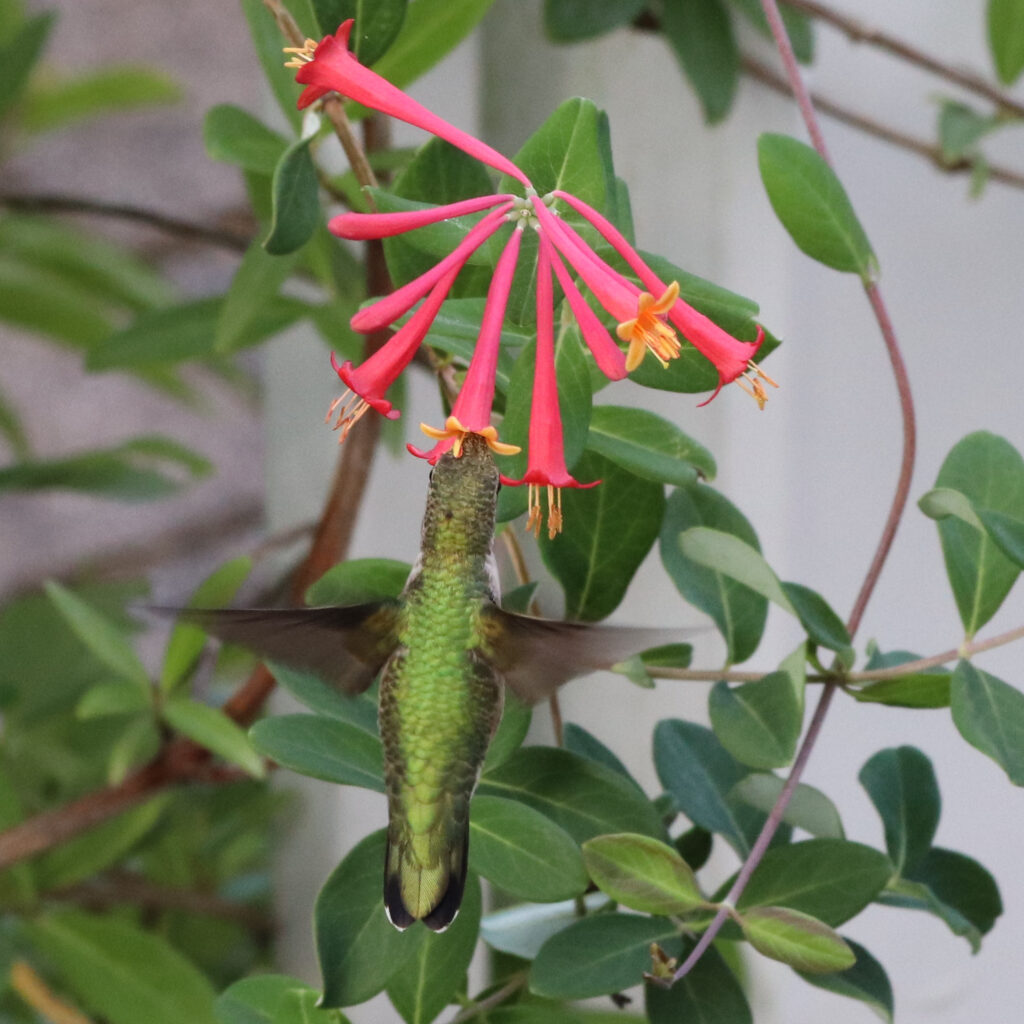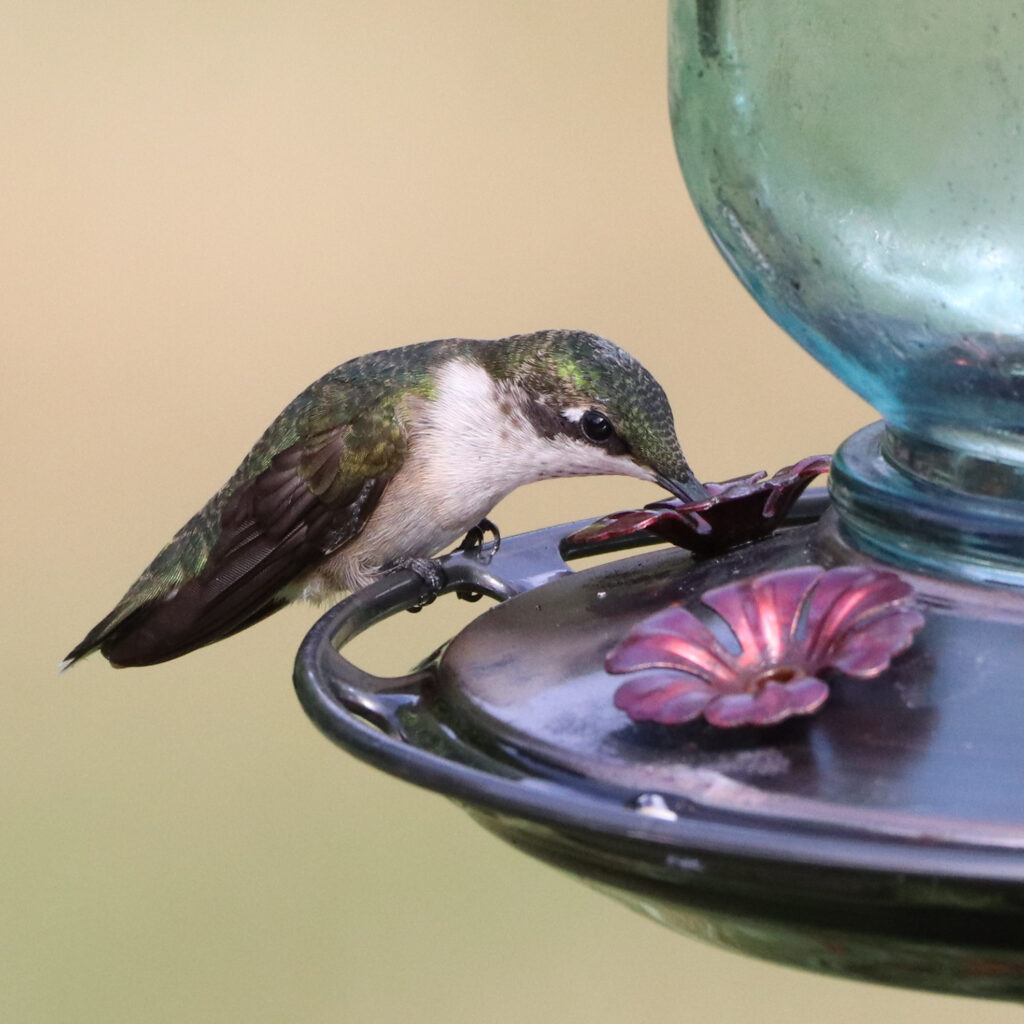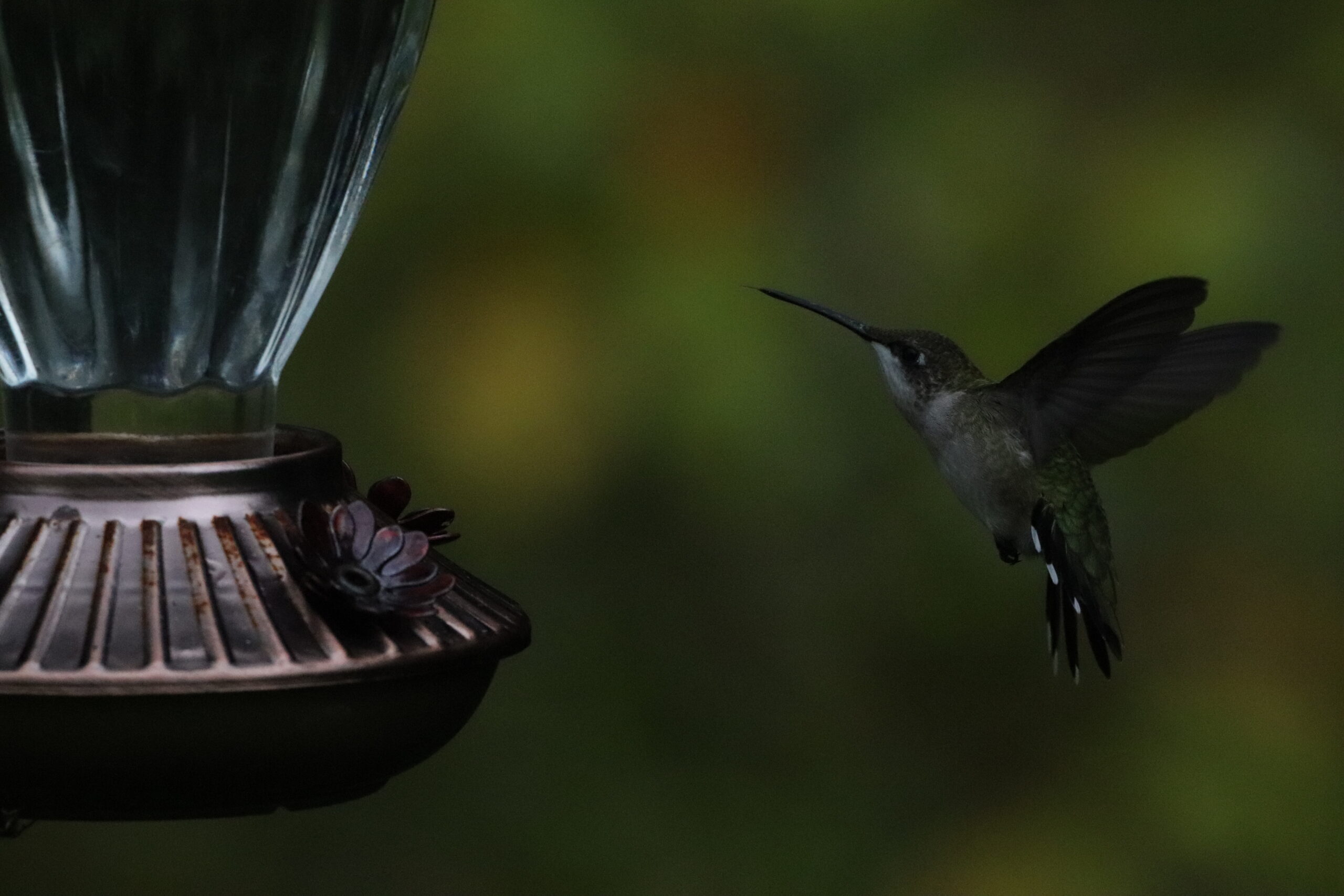With shiny effervescence, a tiny, audacious flight of fury…smaller than even imaginable more a feathered dart of a thing. All of my sodden thoughts during 4 solid days of rain always came back to flashes of sprite-like flight. Thinking how? Why? Is it the winds of the storm that brought you down to my yard? One day of hard rain followed on cue by 3 straight days of mizzle. Hardly a squirrel or chipmunk came out to play…yet there you were. Add on one more day of rain, just in case we haven’t had enough.

Here we are, almost to October one, and I have seen hummingbirds in my yard this past week, even this morning! The females definitely migrate later than the males, but it seems these ladies really prefer the shorter lines of off peak travel times. I can’t say I blame them. I am the same way.
Some can fly over 60 miles per hour. Some travel 500 miles in one go. They can fly backwards, sideways or even upside down! Most travel solo. And we are talking about something that weighs less than a marshmallow. Some have a bill that extends longer than the length of their body. They exist only in the Americas from Alaska all the way down to the Tierra del Fuego. They also exist in my yard for well over half the year. Last year, we saw our first buzz-by of a ruby-throated hummingbird on Earth day.
I have been making a simple sugar nectar all that time, and well into fall at this point. (I simply boil about 1 cup of sugar to about 4 cups of water, let cool, and fill the feeders. I don’t use any dyes or colors.)
Keeping your feeders out longer than you think is important!
Equally as amazing to seeing them well into fall, is seeing them first thing at the arrival to spring.
The Ruby-throated hummingbird is an unexpected jolt to the garden when they begin arriving around late spring in the Northeast. Sometimes the quick flyby is so sudden, you spend the rest of that afternoon thinking to yourself, did I see one, or was it my imagination? Their long beaks (and tongues) are well adapted for drinking nectar, otherwise known as Nectarivorous. Though from time to time they do also supplement their diet with insects too.

You can attract hummingbirds to your yard with several types of native plants. Here are a few of their favorite plants:
Coral honeysuckle (Lonisera semivirens) (shown above)
Foxglove beardtongue (Penstemon digitalis)
Cardinal Flower (Lobelia cardinalis)
Great blue lobelia (Lobelia siphilitica)
Pink turtlehead (Chelone obliqua)
Anise hyssop (Agastache foeniculum)

There are many many species of hummingbirds in the world, but for us on the East Coast here, we only enjoy the Ruby-throated hummingbird (Archilochus colubris). The genus name Archilochus is from the Greek for “leader of a company.” The species name colubris is from the Latin for “serpent,” but the species name was probably a misspelling by Linnaeus and should have been colibre, from the French for “hummingbird.” And if you think that is amazing, it is even more amazing that hummingbirds only exist in the New World. Fossil records have been found in the Old World, but for whatever evolutionary reason, they don’t live there anymore.
Only the tiny flowers, barely enough, a drop of nectar or two left. I can keep the sugar water flowing for you my friend. But…flowers more glorious await in every shade of pink and red. So just go, please go. So your return is what I look forward to.
Safe travels, sweet thing.
On recent trip to the most southern point of New Jersey, I actually watched a hummingbird take that colossal daring move where they leave the safety of beach dunes and head out over open water. It was an amazing thing to see. I highly recommend a Fall Migration trip in Cape May. Stay in one of the “nests” at Elaine’s Boutique hotel. You will have a wonderful time!

3 Responses
Thanks for this timely advice and gorgeous photos!
We are just amazed that they are still passing on through. Just saw one again this morning. And here we are at Oct1! Amazing little creatures.
I just read four of your posts in a row. I am now thinking this should be published in a book. I would be happy to Fiume the the cost . It’s probably worth checking if someone has already published a 12 month description of the benefits of native plantings with a combination of the four seasons, the yard animals/friends like meat stick and the birds. Just these last four posts are a very good start and the beauty of the fall season